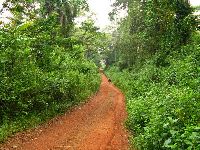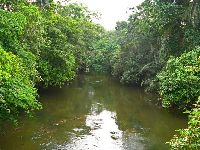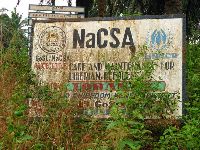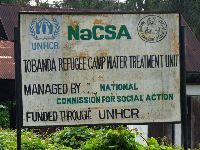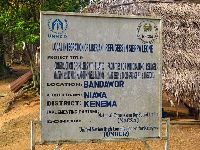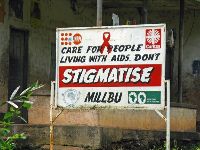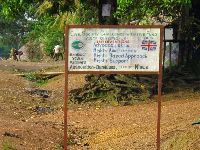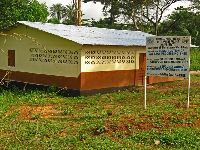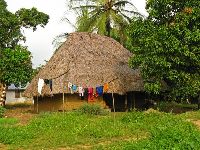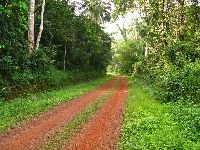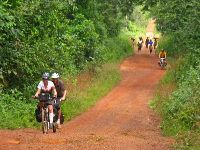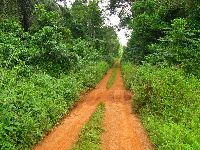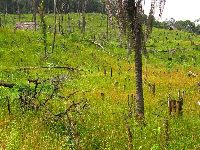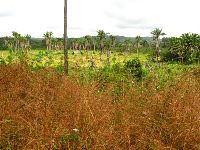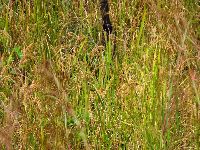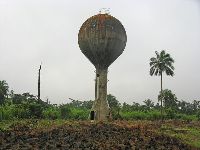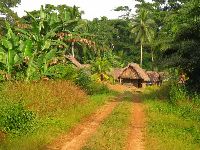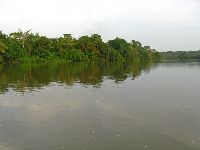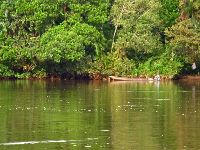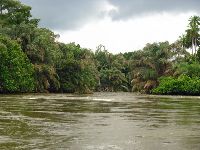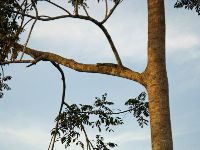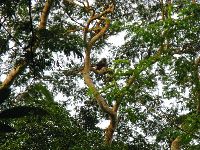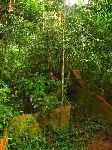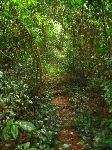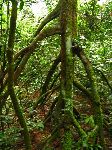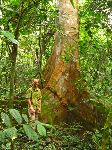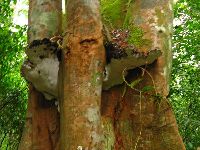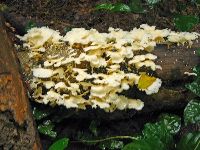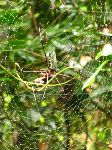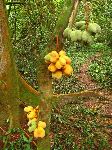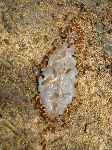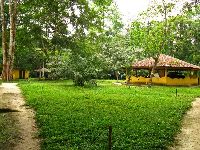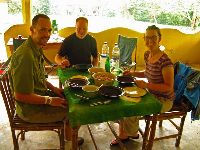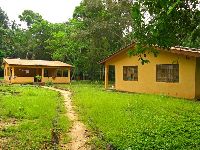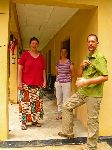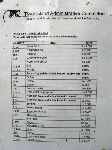|
Sierra Leone: People-to-People |
||
| Dispatch 9 - Tiwai Island | ||
|
Blama-TIWAI ISLAND (70km, 44miles) Formerly this area had a lot of Liberian refugee camps but it has pretty much returned to forest. Points of interest: Twai Island Sanctuary; chimpanzee, colobus monkey, hippopotamus, birds and more. Cycling Conditions: dirt, rolling with a few bigger hills. |
||
|
One of the unique features of this section was aging signs relating to Liberian refugee camps (below). The signs identify a variety of projects like water treatment plants, construction of shelters, integrated development projects, and other infrastructure. All the refugees have now left and there has been an effort to do environmental restoration where the camps were. The last evidence of this period is the aging signs. More story of the issues and development came from non-refugee related signs: These highlighted AIDS awareness, human rights, food security and a number of other issues and projects.
This rises a reoccurring thought: Unfortunately, there is a general lack of a clearly identifiable "Sierra Leonean" cultural character. This observation is important because the Sierra Leonean people seem want to be more than that. They want to be seen as distinctive and unique if for no other reason than so that outsiders want to come and visit and learn about their uniqueness While traditional architecture pops up in villages there is almost always enough block constructed building so that traditional forms rarely distinguishes the character of the community. Other exemplar of material culture like distinguishable ethnical dress, decorative art, landscaping and the like, are also rare to non-existing. Similarly, most of the common visible religious, holiday and ritual culture is drawn from imported Christianity and Islam. Perhaps this stems from economic conditions, where people are using so much of their effort to make ends meet that preserving an ostensively by-gone culture isn't within their means. Or maybe it is just that the culture is dynamic and what we see is what it is. But if this is all there is or will be, it is just another lush, green, friendly place on the coast of West Africa. Not bad, but alas, not exactly the desired level of uniqueness. Trust me that this blog doesn't include every picture of the road in the file, but it was such a nice ride for hours -- until the heat index rose at midday -- that I have to throw a few images in periodically, even if there is nothing strikingly new to say about them. The photos above were take at different places over a twenty kilometer (12 mile) stretch of road. The same is true of rice farms and rice; not every photo is included but there was a lot of it, with enough variation on a theme, that I took a lot of pictures. Above are a few from this section of our odyssey.
The primates don't always cooperate with photographers. The largest animal on the island is the shy pigmy hippopotamus. While the hippopotamus are virtually impossible to see and the primate are generally back lit in the tops of the trees. The mammal population would be stronger and less skittish if they hadn't be heavily hunted and poached during and after the civil war. The rebels occupied and looted the island several times during the war. With improved management and a period of peace for the wildlife, they should be a greater attraction in the future. Primate aren't all of it: There is a lot of interesting other life on the island that largely get over looked (from left to right above); roots that run out hundreds of feet half buried and half above ground, dense foliage made up of a mix of the 700 species of plants on the island, exotic root structures and giant trees. Among the 700 species there must be volumes of ethno-botany to parse. In addition to more sophisticated plant life there is a variety of mushrooms, lichens and fungus. The ones shown below look like varieties of shelf mushrooms and oyster mushrooms. Other more micro and macro objects that can be discovered on a forest walk are (from left to right, above); a giant spiders, enormous twisting vines, curious unidentified fruits and billions terminates busy recycling the forest. Only a two small parts of the island are develop. One area is for short-term visitors. There is a central “barray” for relaxing and meals. (Locally, a barray or barrie, is a community building that acts as a courtroom, a town hall and a general gathering place.) It's lights are powered by a near-by solar panel. Guest sleep on several permanent tent platforms located at the forests edge around the pavilion. The platforms are open air, but raised to discourage some of the creepy crawlers and are constructed with a sturdy roof to keep the rain out. One and two-person tents are pitched underneath and the tents are provisioned with a firm foam mattress and sheets. Nearby is water tower and a building with toilets and gravity fed showers. Also in the visitor complex is the bar, a kitchen and storage buildings for the staff.
|
Addendum:
|
|
|
||
|
|
Unique Programs To Special Places For Memories Of A Lifetime!
"Hosted by
DreamHost - earth friendly web hosting"
|
